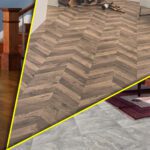The influence of environmental factors on structural design including wind-water and seismic forces
Environmental Variables’ Impact on Structural Design
The art and science of designing safe, practical, and aesthetically beautiful structures is structural design. To accomplish these objectives, structural engineers must consider a vast array of environmental elements that can affect the performance and durability of their designs. Wind, water, and seismic stresses are the three most important environmental elements that influence structural design.
Wind:
Wind is one of the most prevalent environmental elements that can negatively impact the performance of constructions. If not adequately planned, wind loads can cause buildings and other structures to shake, wobble, and even collapse. Through wind tunnel testing and computational fluid dynamics simulations, structural engineers can precisely forecast wind loads on buildings and other structures. In order to reduce wind loads and improve structural stability, they also design structures with aerodynamic characteristics, such as tapered or streamlined designs.
Water:
Water is another environmental component that can have substantial effects on the construction of structures. Water-related perils, such as flooding and tsunamis, can harm or destroy structures and infrastructure. Engineers must build structures that can withstand the hydrostatic, hydrodynamic, and corrosive effects of saltwater. They also construct structures with features such as floodgates and levees to protect human life and property from water-related threats.
Geological Forces:
Seismic forces, which are induced by earthquakes and other ground movements, are one of the most complicated and difficult environmental aspects structural engineers must consider while designing. If structures are not adequately prepared to withstand seismic energy, they may swing, crack, or even collapse. To design structures that can withstand seismic forces, structural engineers must consider soil qualities, building height and weight, as well as the frequency and severity of seismic activity in the region. In addition, they use advanced modelling and simulation tools to properly forecast the seismic behaviour of structures.
Environmental variables, such as wind, water, and seismic forces, have a substantial impact on the construction of structures. These variables must be carefully considered by structural engineers to guarantee that their designs are safe, durable, and functional. By adding aerodynamic shapes, floodgates, and seismic-resistant design principles, they may develop structures that can survive a variety of environmental conditions and assure the safety of occupants and users.
Disclaimer: This content is provided solely for your review. Erusu Consultants takes no liability for this article. The reader is advised to form their own opinion. Please consult a structural engineer before making any final decisions.






